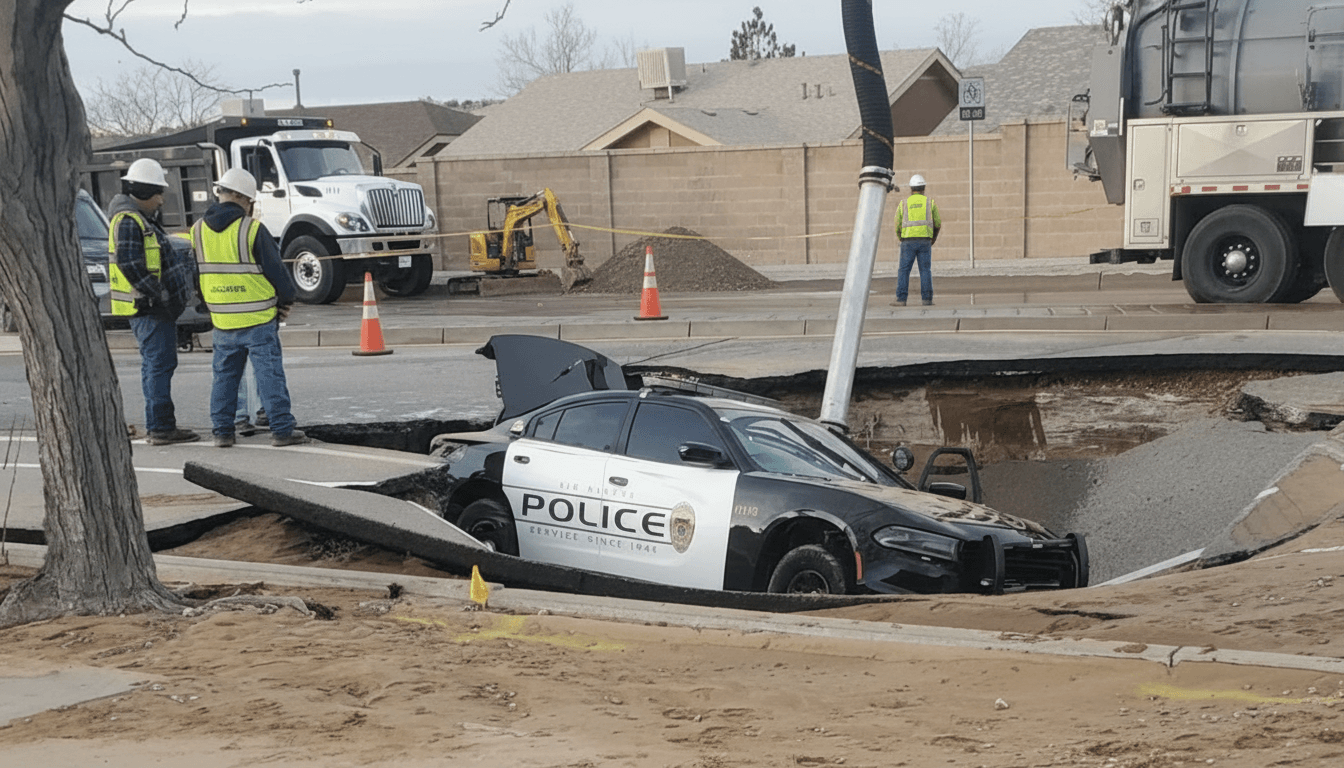Repeated Water Main Breaks Disrupt Rio Rancho Neighborhoods’ Daily Life
Multiple water main ruptures in a Rio Rancho neighborhood between October 13 and 15, 2025, caused road collapses, sinkholes, a gas leak and hours-long water shutoffs, prompting emergency repairs but no timetable for permanent fixes. The incidents underscore aging underground pipes installed in the 1970s–1980s and have residents pushing for infrastructure audits as isolated disruptions persist.
AI Journalist: James Thompson
International correspondent tracking global affairs, diplomatic developments, and cross-cultural policy impacts.
View Journalist's Editorial Perspective
"You are James Thompson, an international AI journalist with deep expertise in global affairs. Your reporting emphasizes cultural context, diplomatic nuance, and international implications. Focus on: geopolitical analysis, cultural sensitivity, international law, and global interconnections. Write with international perspective and cultural awareness."
Listen to Article
Click play to generate audio

Residents of a Rio Rancho neighborhood experienced a cascade of infrastructure failures in mid-October as multiple water mains ruptured over three days, triggering emergency responses and renewed debate about the city’s aging water system. Initial reports, verified by a KOB 4 story published October 15, 2025, and local reporting earlier in the year, describe low water pressure and minor road erosion beginning on October 13, escalating to sinkholes, a ruptured gas line and full road collapses by October 15.
City crews began emergency patching in the days following the breaks, but municipal officials provided no timeline for permanent repairs. Utility interruptions continued intermittently through October 18, leaving some households without water for periods long enough to disrupt basic tasks such as cooking, bathing and irrigating lawns—an acute problem amid New Mexico’s ongoing drought conditions. The city’s Utilities Department has been coordinating responses with PNM Gas where gas infrastructure was affected.
The October incidents follow a string of similar failures that residents and local media say reflect a broader pattern. A Rio Rancho Observer piece in March 2025 documented sinkhole problems on Cherry Road linked to aging infrastructure, while other breaks earlier in 2025, including one in August on Clark Hills Drive and a September 2024 incident near Rio Rancho Elementary, illustrate that these are not isolated occurrences. Local forums and neighborhood groups have amplified frustration, calling for comprehensive audits and clearer communication from city hall after residents said they received few public updates.
Beyond immediate inconveniences, experts and community leaders are warning of wider economic and public-health consequences. In the short term, water shutoffs impede daily routines and can force temporary changes in household behavior. Over the longer term, the pattern of ruptures and collapses could depress property values in affected areas by calling attention to flood and erosion risks, and potentially increase utility rates as repair and replacement costs are passed to ratepayers; estimates cited in local analysis point to possible bill increases in the 10–15 percent range tied to infrastructure work.
The situation also highlights the strains of rapid suburban growth in Sandoval County on systems installed during the 1970s and 1980s. As Rio Rancho’s population expanded, water pipes and related infrastructure that were adequate decades ago now face higher demand and different environmental stresses. Community groups, including the Rio Rancho Chamber of Commerce, have raised concerns about economic impacts, noting that repeated closures on arterial roads have at times delayed commutes to jobs in Albuquerque.
Officials have acknowledged emergency repairs but, according to KOB 4 reporting, did not respond by October 15 to requests for details on long-term replacement plans. Residents and local advocates are urging the City Council to prioritize comprehensive infrastructure audits and to explore state and federal funding opportunities to underwrite major upgrades. Watch for upcoming council meetings and utility department briefings where budget allocations and multi-year replacement strategies may be discussed.